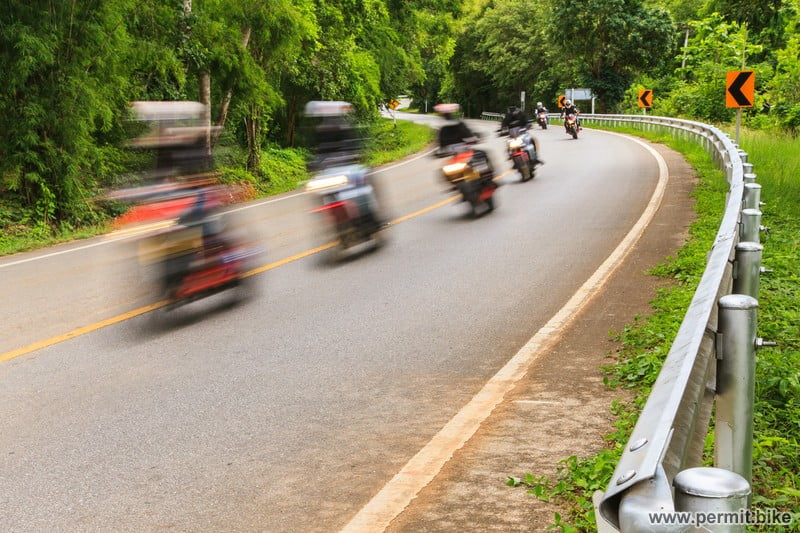So you’ve been riding for a while now, getting used to the feel of the motorcycle and getting out there enjoying yourself.
Inevitably what happens when we ride is, we meet others with the same passion for the open road as ourselves. These chance meetings often lead to an invitation to a group ride.
Oh perhaps you have found a group to ride with and are looking forward to your first time riding with others.
Either way, this is an exciting time for you! Group rides can be a rewarding experience.
So let’s cover a few basics to get you ready for that ride.

The structure of a group ride, who is who?
A group of motorcycles riding together more often than not will have designated roles assigned to them. Not to worry, beginners are normally exempt from being assigned one of these roles, and experienced ride leaders already have them in place.
- Road Captain. This is the first bike. This rider knows the route and determines the stops along the way.
- Often the most experienced rider in the group, he rides in the back. This person’s responsibility is to make sure that no one falls behind.
- A larger group wants to be able to stay together as much as possible, especially when it comes to intersections. Blockers will actually ride into the intersection and stop traffic long enough for everyone to get through.
Depending on the size of the group, there can be more than one rider in these roles.
Hand Signs
I remember learning my left and right turn hand signals for my endorsement, thinking, “why would I need these if signal lights are mandatory?”
Although some may be using their signal lights, that can be difficult to see on a sunny day. Hand signals are visible, and the turn signals are only one example of many.
For example, a hand straight up is telling riders to change from a staggered formation to one signal line, often to get around something like a bicycle rider or an object on the road. A hand patted down means to slow down, or a stop is coming.
Your best bet is to do a search for hand signals and memorize them. Not only will you be expected to understand the signals someone ahead of you makes, you will need to repeat the same signal for those behind you.
After a few times, you will easily pick this up and it becomes second nature.
Stay in your spot
Almost all group rides will ride in a staggered formation. This means if the motorcycle ahead of you is in the right part of the lane, you take the left. Often this formation will switch up if one bike drops out for some reason. A good rule of thumb is to keep tight to the motorcycle ahead of you, tight being a relative term based on the speed.
For example, as you go out onto the open road, this distance can grow a little. But going through traffic you will want to keep this as tight as you can comfortably and safely ride.
This brings us to a trustworthy saying, ride your own ride. What that means is, if the bike ahead of you decides to run the light, let him. Better to get a little behind than to put yourself in a dangerous situation! The same can be true of twisty roads. Do not ride faster than you are comfortable with. Any responsible group will do their utmost to make sure they don’t lose riders and will slow down if someone gets behind.
Group riding can be an amazing experience. My last piece of advice would be to let the leaders know this is your first time. Knowing this, they will often put you in the middle of the pack along with other more experienced riders willing to watch out for you.
With that said, get out there and enjoy the ride!
My next blog will be advice for an overnight road trip.
Until then; remember, ride safe, ride smart, and have fun!
David Ianetta was born and raised in Boston, MA. After moving around in his younger years, he now lives in North Carolina. David has a passion for riding motorcycles,often exploring the scenic back roads of NC with is wife, Rika, who rides her own along side him.
David also writes a Daily Blog for Freedom Biker Church called, “Daily Rock“ located at www.freedombikerchurch.com and is a contributing writer for Southeastern Rider magazine.
